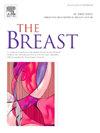Cost-effectiveness of genetic risk-stratified screening for breast cancer in Taiwan
IF 7.9
2区 医学
Q1 OBSTETRICS & GYNECOLOGY
引用次数: 0
Abstract
Background
Risk-stratified breast screening has gained international attention, as individualized risk assessments can inform screening initiation, frequency, and whether to screen. In this study, we evaluated the cost-effectiveness of risk-stratified screening based on genetic testing for breast cancer-associated single nucleotide polymorphisms (SNPs) compared to the current age-based screening program in Taiwan.
Methods
A Markov model was used to estimate lifetime health outcomes and costs for 35-year-old Taiwanese women without a family history of breast cancer. The model adopted the healthcare payer's perspective, applied a 3 % annual discount rate, and utilized epidemiological and cost data primarily derived from Taiwanese sources whenever possible. Scenario analyses included various percentile thresholds used to define polygenic risk groups in the risk-stratified screening strategy. Within this strategy, no screening was modeled for women in the low-risk group, while those in the intermediate- and high-risk groups were offered standard biennial mammography, beginning at ages 40 and 35, respectively, and continuing until 69.
Results
Compared to the current age-based mammogram-only screening, polygenic risk scores (PRS)-informed risk-stratified breast cancer screening generated additional costs and quality-adjusted life years (QALYs), with an incremental cost-effectiveness ratio (ICER) of US$75.71/QALY. Scenario analyses using different PRS cutoffs consistently yielded ICERs well below one time Taiwan's gross domestic product per capita per QALY, suggesting cost-effectiveness of genetic risk-stratified screening.
Conclusion
Incorporating polygenic risk into the current breast cancer screening program may improve health outcomes at an acceptable cost. These findings support implementing risk-stratified screening in future policy.
台湾乳癌遗传风险分层筛检的成本效益
风险分层乳腺筛查已引起国际关注,因为个体化风险评估可以告知筛查的开始、频率和是否筛查。在这项研究中,我们评估了基于乳腺癌相关单核苷酸多态性(snp)基因检测的风险分层筛查与台湾目前基于年龄的筛查方案的成本效益。方法采用马尔可夫模型对35岁无乳腺癌家族史的台湾女性进行终生健康结局和成本估算。本模型采用医疗保健支付者的观点,采用3%的年折现率,并尽可能利用主要来自台湾来源的流行病学和成本数据。情景分析包括在风险分层筛查策略中用于定义多基因风险组的各种百分位数阈值。在这个策略中,没有对低风险组的妇女进行筛查,而对中高风险组和高危组的妇女进行标准的两年一次的乳房x光检查,分别从40岁和35岁开始,一直持续到69岁。结果与目前基于年龄的单纯乳房x线照片筛查相比,多基因风险评分(PRS)知情的风险分层乳腺癌筛查产生了额外的成本和质量调整生命年(QALY),增量成本-效果比(ICER)为75.71美元/QALY。使用不同PRS截点的情景分析得出的ICERs均远低于台湾人均国内生产总值(gdp)的1倍,这表明遗传风险分层筛查具有成本效益。结论将多基因风险纳入目前的乳腺癌筛查计划,可在可接受的成本下改善健康结果。这些发现支持在未来政策中实施风险分层筛查。
本文章由计算机程序翻译,如有差异,请以英文原文为准。
求助全文
约1分钟内获得全文
求助全文
来源期刊

Breast
医学-妇产科学
CiteScore
8.70
自引率
2.60%
发文量
165
审稿时长
59 days
期刊介绍:
The Breast is an international, multidisciplinary journal for researchers and clinicians, which focuses on translational and clinical research for the advancement of breast cancer prevention, diagnosis and treatment of all stages.
 求助内容:
求助内容: 应助结果提醒方式:
应助结果提醒方式:


